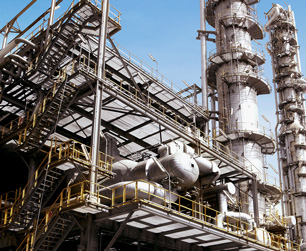Trichloroethene (TCE)

Trichloroethene (also known as TCE or trichloroethylene) is a clear, colorless, nonflammable volatile organic chemical that has been used as a degreasing solvent, a paint stripper, an adhesive solvent, and as an ingredient in paints and varnishes.
TCE arrives in drinking water through discharge from chemical and metal degreasing factories.
Health Effects of Trichloroethene
The International Agency for Research on Cancer lists TCE as being “probably carcinogenic to humans.” It's acutely toxic, causing headaches, lung irritation, poor coordination, and difficulty concentrating. The EPA warns of potential liver damage:
Some people who drink water containing trichloroethylene well in excess of the maximum contaminant level [0.005 milligrams per Liter] for many years could experience problems with their liver and may have an increased risk of getting cancer.
Water Treatment for Trichloroethene
Trichloroethylene can be treated with activated carbon adsorption, reverse osmosis (removes 70 to 80 percent), and air stripping. The EPA recommends granular activated carbon (GAC) in combination with packed tower aeration (an air stripping method.)
Sources: EPA, WHO, IARC, Photo: WikiMedia, author: Secl
Site Index
Filtration Systems
- Aeration for Iron & Sulfide
- Backwashing Filters
(whole house & well units)
- Chlorine & Chemical Injectors
- Countertop Water Filters
- Emergency Filters
- Garden Hose Filters
- Reverse Osmosis, Residential
- Reverse Osmosis, Commercial
- Shower Filters
- Specialty Filters
- Ultraviolet Systems
- Undersink Filters
- Water Softeners
- Whole House Filters
Cartridges
Parts
- Replacement Parts
- Faucets
- Filter Media
- Fittings
- Housings
- O-rings
- Pumps
- Pura UV
- R.O. Parts
- R.O. Tanks
- R.O. Booster Pump
- VIQUA UV